In these final chapters of 2023, the holiday season ushers in many opportunities for togetherness with family and friends. Amidst the flurry of activities, it’s important to continue prioritizing your and your loved ones’ well-being. This issue of Start Healthy is here to help with tips for caring for your pets, strategies for combating winter-related pains, and much more.
If you’re looking to give your meals a boost, incorporating winter-ripened fruits and veggies is a surefire way to add more nutrients and flavor. From savory soups to delicious entrées, the enclosed guide will help you create a nutrient-packed holiday feast that’s both delicious and guilt-free.
Whether you’re cooking for friends or family, salads are always a great option due to their versatility. Inside, discover two delicious recipes—a warm wilted cabbage salad and a shaved-pear dessert—from Sheela Prakash’s Salad Seasons that are sure to hit the spot during the chilly months.
In the excitement of the holiday rush, don’t overlook the well-being of your beloved pets. This issue is filled with tips to help you place their health at the forefront, guaranteeing a season that’s not only festive for you but also merry and safe for your furry companions.
The drop in temperature and air pressure during winter can take a toll on your body, often making the season less enjoyable. Fortunately, there are many ways to combat these aches and pains. The article in this issue offers practical tips to help you keep your muscles and joints in great condition so you can enjoy all this season has to offer.
Here’s hoping you have a healthy and joyous holiday season! As always, it’s a pleasure to send you this magazine.
The holidays are known for their twinkling lights, colorful gift wrapping, and maybe even a white blanket of snow. But there’s a tastier element of the season that warrants months of anticipation: the food. Depending on your family’s go-to recipes, you may sit down to a selection of roasted meats next to savory sides of pillowy mashed potatoes and perfectly crisp stuffing, all followed by a beautiful bounty of desserts. Who could resist throwing on an ugly sweater if this great feast is your reward?
However, such indulgence begs the question: Can holiday comfort food actually be healthy? The answer is yes—simply incorporate winter-ripened produce into your recipes. Try these tips to make your holiday table a nutrient-packed cornucopia so you can say hello to the season with a healthier appetite and fewer regrets.
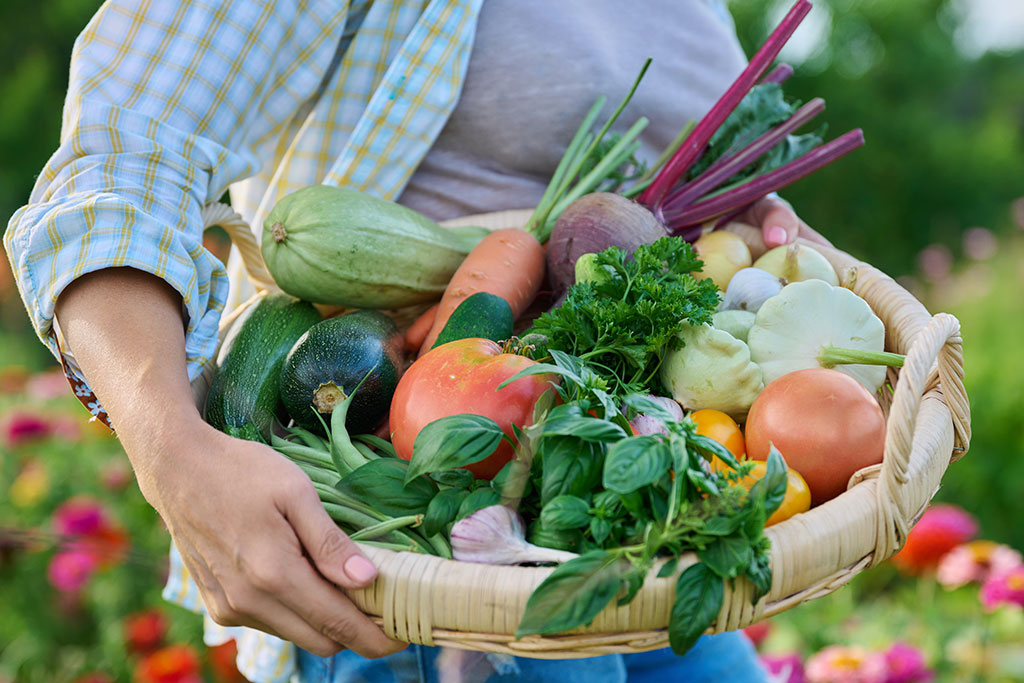
There are many advantages to making seasonal fruits and vegetables the primary ingredients for your holiday cooking. First, produce consumed during its peak harvest season may offer more nutrients like vitamins, minerals, and antioxidants. And because it’s fresh, it will taste better as well. As Healthline explains, “Once a plant reaches its peak growth, or maturity, it’s harvested. Plants that are harvested for food are typically at their best at this time, offering maximum flavor and nutrition.”
Winter-ripened fare is often priced better too. For example, offseason options like peaches, which mature in summer, must be refrigerated or frozen for longer periods—or even shipped from other locations—to be sold in winter. Naturally, food purveyors pass those extra costs on to the consumer. You can get a much better value for pears and apples around the holidays because they’re freshly harvested in winter months.
Also, if you’d like to give Mother Nature a holiday gift, choose winter produce for its lower environmental impact. Sourcing food seasonally may reduce the greenhouse gas emissions attributed to long-term food storage and shipping. That’s even more guilt off your shoulders when you dig into your holiday meal.
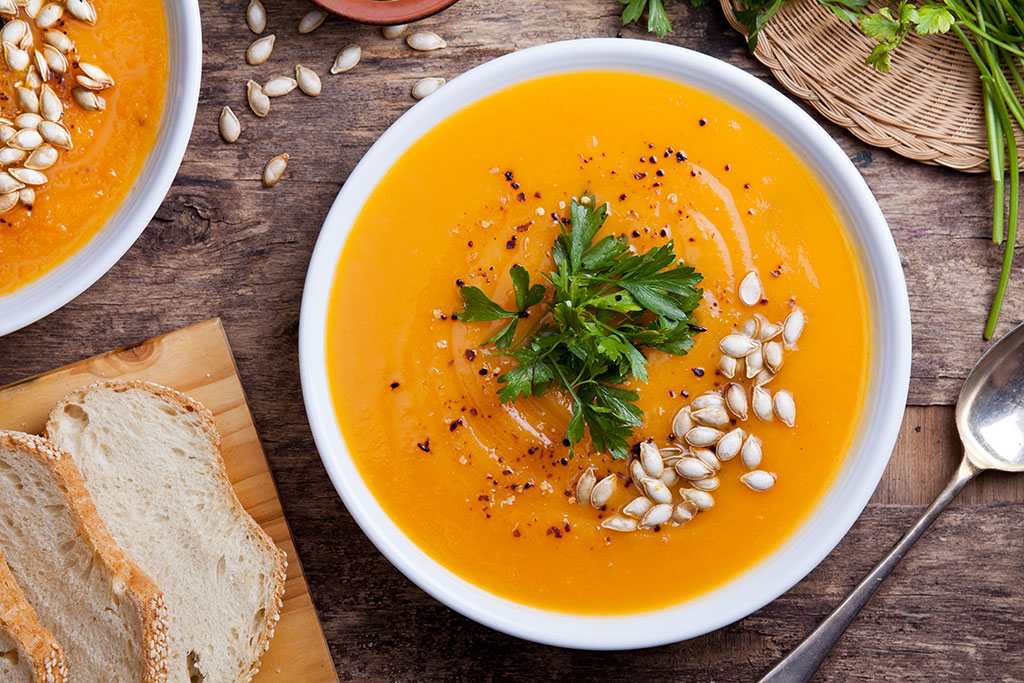
These appetizers are among the most versatile foods for healthy eaters, particularly because they tend to be vegetable based. Leafy produce like cabbage, Swiss chard, and collard greens are crisp and flavorful in winter, and these foods can either form the bulk of salads or be wilted into soup broths for extra nutrients. Additionally, there are abundant seasonal soups that are based on winter squashes such as sugar pumpkin, acorn, and butternut varieties. Roast and puree just about any of these to create a smooth and scrumptious appetizer. Mix in cream for a silky texture (or stick to dairy-free alternatives like chicken or vegetable broth), and then top each bowl with fresh herbs and roasted pumpkin seeds.

Lovers of classic holiday sides, rejoice: potatoes are ripe for the picking—and frying, boiling, roasting, and sautéing—in winter. That means you can enjoy helpings of mashed potatoes, herb-roasted potatoes, and sweet potato casserole while also benefiting the environment, if not your diet. Feel free to embrace all these staples at your holiday table; guests will probably expect them.
Surprisingly, green beans are actually well past their peak season by the time the winter holidays roll around, but you have many other healthy supporters to choose from. For example, spaghetti squash’s signature noodle-like flesh makes the perfect substitute for pasta in casseroles like creamy “mac” and cheese. And for virtually effortless sides, simply season and roast ripe winter produce like beets, brussels sprouts, and parsnips (the subtle, licorice-flavored relatives of carrots).

It’s easy to pop seasonal produce into your main meat dishes too. The class of vegetables and herbs known as aromatics can boost your turkey, ham, stuffing, and other entrées with plenty of nutrients—as well as provide a pleasant aroma that lends these dishes a deeper, more satisfying flavor. Fresh options around the holidays include celery, carrots, onions, and leeks. These flavorful vegetables all pair together wonderfully, and they can even help keep foods moist as they bake for hours upon hours. Tie it all together with fresh, in-season herbs like rosemary and sage for a rustic flavor and deep fragrance your guests will absolutely love.
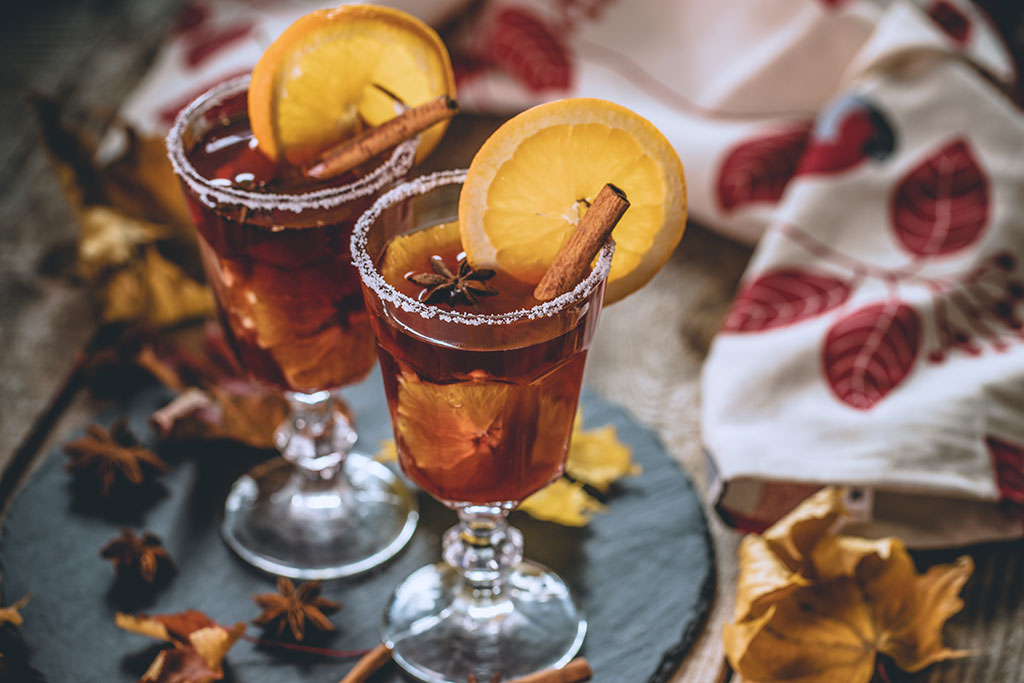
Rather than stocking bottles of soda for your guests, whip up some healthy holiday drinks to toast with. For a traditional American recipe straight from New England, brew homemade apple cider with a touch of orange and warm spices like cloves and cinnamon sticks. Or provide your adult guests who imbibe a variety of cocktails made with fresh fruit juice, including classic holiday favorites like warm mulled wine. Then use other seasonal fruits such as grapefruit and kiwi to punch up bar favorites from old-fashioneds to Moscow mules.

There’s no such thing as an innocent dessert, unless your perfect conclusion to a meal is simply a plain fruit salad. (Needless to say, offering this alone won’t make you a very popular host.) However, there are wonderful seasonal fruits that lend themselves perfectly to holiday baked goods, including dates, pears, and apples. Incorporate nature’s candy into pies, cobblers, or tarts for generous servings of nutrients—and attractive coloring too.
Of course, just about all fruit-based desserts will call for a hearty helping of unhealthy ingredients such as sugar, heavy cream, and butter, but don’t lose the spirit of the season. Treating yourself to a sensible portion of holiday desserts is an excellent way to celebrate with loved ones. Plus, if you use the prior tips to make your other holiday courses more nutritious, then you’ll deserve a sweet reward.
As winter wraps us in its chilly embrace, what better way to find warmth and comfort than with delicious meals and desserts? These flavor-packed recipes from Sheela Prakash’s Salad Seasons, which perfectly embrace this time of year, are sure to delight your friends and family.
This modest and cozy salad features thinly sliced green cabbage tossed with a warm caramelized-shallot dressing and garnished with nutty shaved Gruyère cheese.
An understated but decadent dessert, this dish combines juicy pears, rich dark chocolate, and a delightful amaretti-cookie crumble to create the perfect balance of flavors and textures.
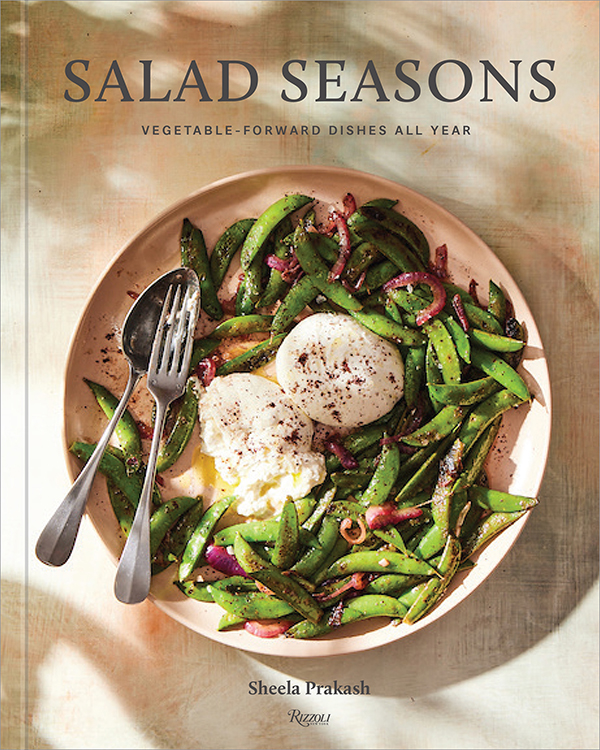
Salad Seasons: Vegetable-Forward Dishes All Year by Sheela Prakash © Rizzoli, 2023. Photography © Kristin Teig.
recipe by sheela prakash
photos by kristin teig
Cabbage might just be the humblest vegetable around. It sits patiently among all the other winter vegetables, often getting ignored. It’s inexpensive and unassuming. When it’s taken home, though, it gives and gives. A head of cabbage lasts forever in your refrigerator’s crisper drawer and can be transformed into a countless number of cozy, wholesome dishes. This simple recipe is inspired by retro warm spinach salads, but instead of spinach, thinly sliced green cabbage is the star. It’s tossed with a warm caramelized shallot dressing and paired with lots of nutty shaved Gruyère for a winter salad that’s modest in the best way.
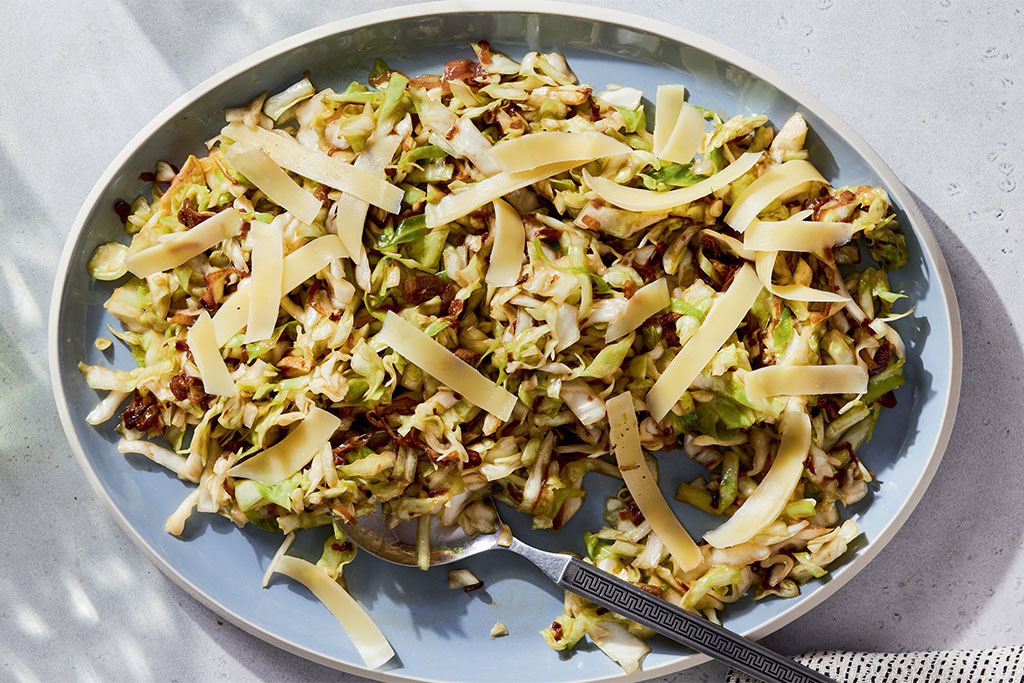
Serves 4
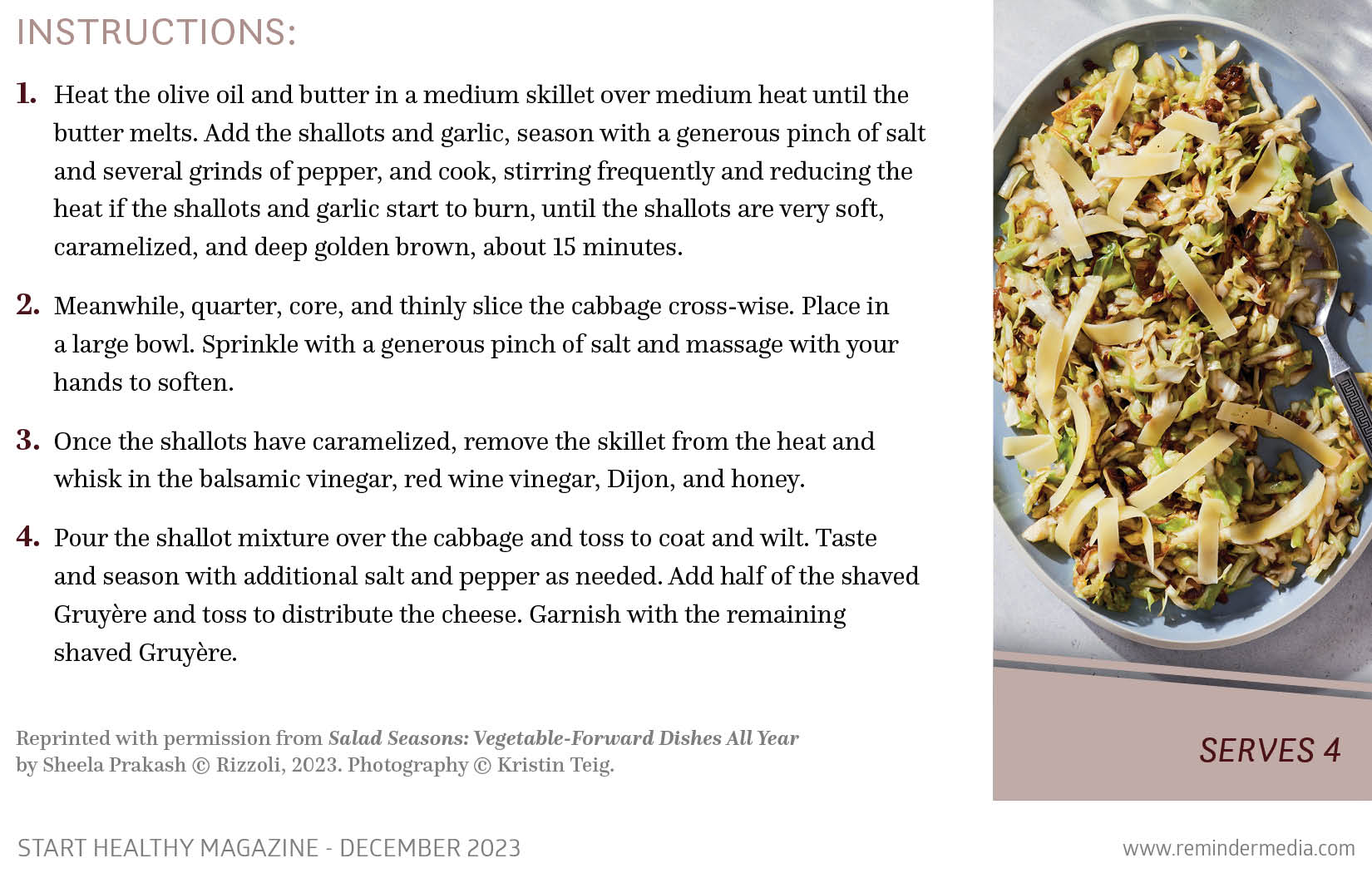



recipe by sheela prakash
photos by kristin teig
Crunchy Italian amaretti cookies, also called amaretti di Saronno, are a fun ingredient to play around with. While you can of course pair a couple with your espresso, they’re so packed with bittersweet almond flavor, that’s really just the beginning. You can grind them into a flour-like consistency to use in cakes, turn them into a crust for tarts or cheesecakes à la graham crackers, or add them to a fruit crumble topping. Using them as a crumble is the approach here, except you’ll bake it separately to create sweet and crunchy contrast for a bowl of juicy shaved pears and dark chocolate. It’s an understated dessert that feels special.
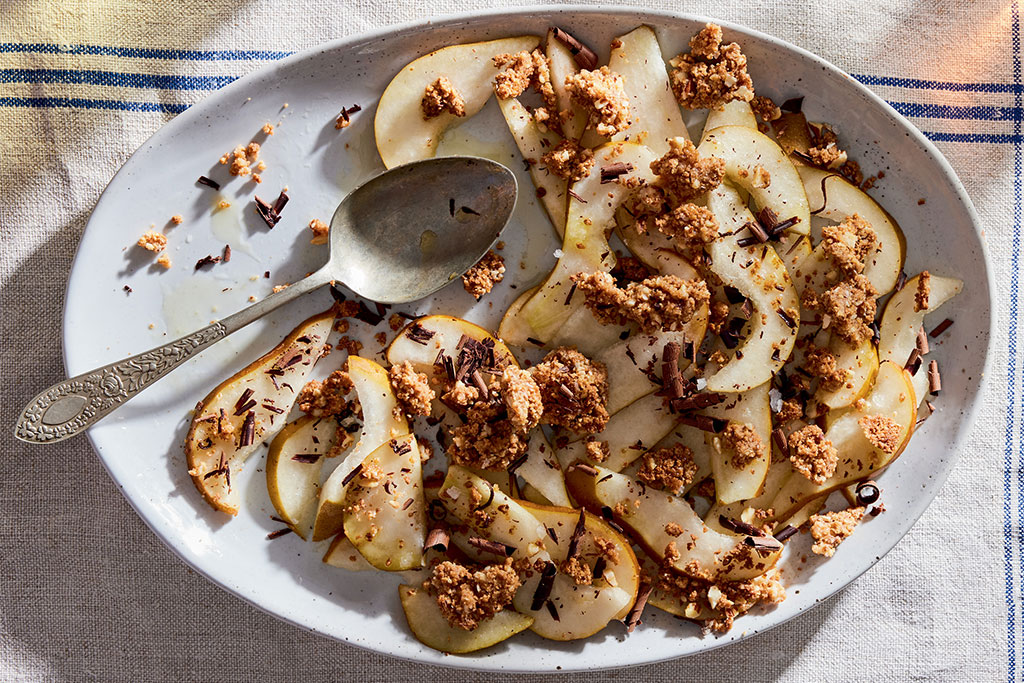
Serves 4
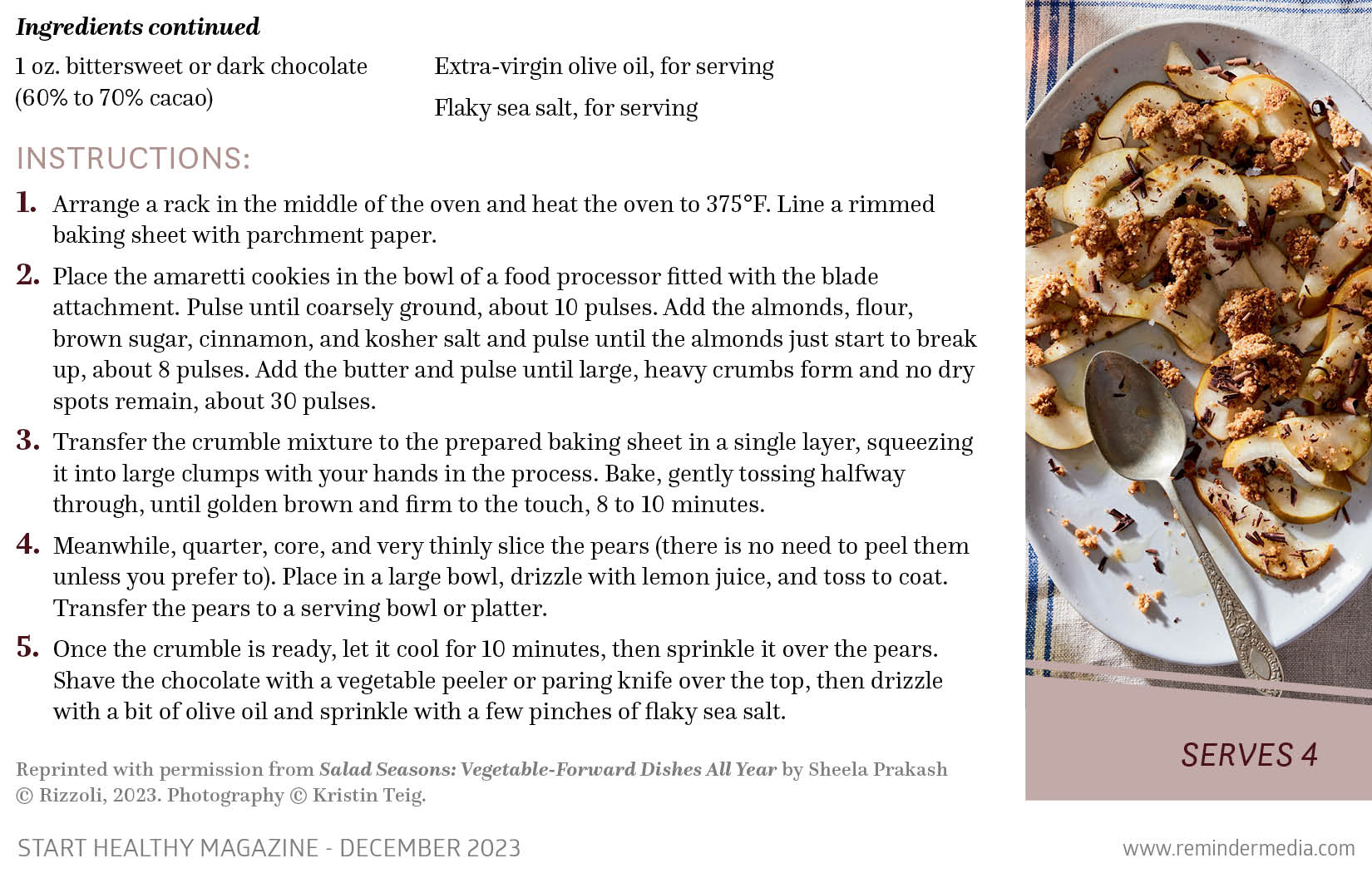


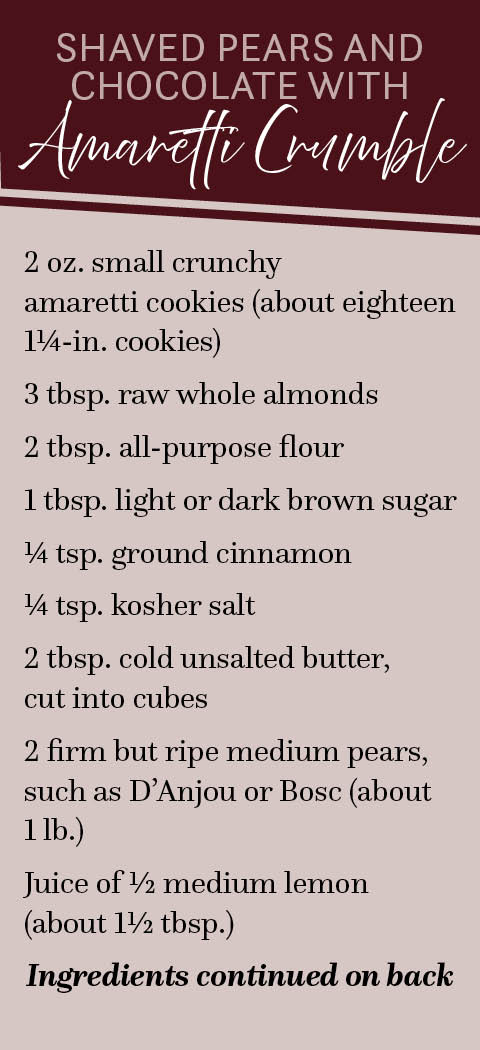
The holidays can be a wonderful time of year filled with heartwarming get-togethers, festive activities, and lots of delicious food. Unfortunately for pets, though, some of those joys can be drawbacks or even serious hazards. Use this guide to help keep your dog, cat, bird, or other animal companion safe and happy all throughout the season.

Just as people can experience anxiety and loneliness during the holidays, so can your pet, especially if they are left alone more often than usual as you attend holiday parties and other gatherings. And also like us, they may express their negative emotions in a number of ways, such as by eating less, sleeping more, or acting out destructively or aggressively, whether that involves chewing your shoes or snapping at you.
To help keep your pet happy and secure, maintain as much of their daily routine—like their feeding times, walks, and playtimes—as possible. Many animals are creatures of habit, so keeping up with your pet’s usual activities can help them feel less anxious. But if you do find it hard to stick to their usual schedule, ask a friend or relative to look in on them on certain days or hire a sitter who can pick up some of the slack. Depending on your calendar, you may also want to consider boarding your pet. This can be an unpleasant experience for some animals, while others may benefit from the extra attention, care, and opportunities to play and socialize they may get.
If your pet still shows signs of anxiety or depression despite your best efforts, consult your vet, who could offer further advice or prescribe behavioral therapy or medication.

Another way to combat your pet’s negative feelings is to incorporate some active time for them, such as with a game of fetch or a pet puzzle they can work on. Besides keeping them physically healthy, giving them the chance to romp around and play will allow them to release pent up energy, staving off boredom and restlessness. You could also provide them with a comforting toy specifically designed to mitigate anxiety or depression: a snuffle mat for a dog or cat, a treat ball for a cat, dog, rabbit, or rodent, or a chew toy for a parrot or other bird. These items can help soothe your pet by offering a distraction for them, dispensing tasty tidbits, or encouraging a soothing behavior like licking or chewing.

The holidays are an easy excuse to let loose and indulge your pet, but you should be careful about what you allow them to sample. Many holiday dishes, such as pot roast and stuffing, include garlic and onions, which are toxic to animals like dogs, cats, and rabbits. Currants, raisins, and chocolate, often found in festive baked goods, can also make your animal sick. To be safe, avoid feeding your pet from the table in general, and don’t leave holiday delicacies out where they can easily be snagged. Furthermore, never feed Fido bones from your meals or Fluffy cod or other fish containing large, sharp bones because they can crack their teeth or get lodged in their digestive system. If you’d like to treat your pet, there are healthier options to consider, such as small helpings of plain pumpkin, peas, and carrots for your dog, cat, or rabbit. (For extra peace of mind, check with your vet first about the best foods to offer.)

You’ll want to choose your decorations prudently since some holiday decor can be dangerous for pets. For example, poinsettias, holly, and mistletoe contain substances that can be harmful or even toxic to your animal, so put them where your pet can’t reach them or avoid using them altogether. The same goes for lit candles and Christmas trees—a rambunctious dog or kitty can easily topple either of these, potentially damaging your property or starting a fire that can put everyone at risk. Additionally, the ornaments and tinsel on your tree and the wrapping paper, bows, and ribbon on your gifts can be choking hazards for your animal, so keep a watchful eye on them around these items.

At times, your pet might need a quiet space of their own, especially if you are entertaining frequently during the season—the associated noise and commotion can be confusing and threatening for them. During the gathering, consider putting them in a separate room or space where they can relax. This can also help prevent them from escaping outside as your guests come and go. Just be sure to leave them with some fresh water and food, comfortable bedding, a pee pad or litterbox, and toys, and check in on them regularly throughout the event.

If you and your pet will be traveling over the holidays, bring their identification (such as an ID tag), proof of vaccination, and plenty of kibble and water. Before flying with your pet, consult the airline’s pet policies, and when driving, keep them properly contained or restrained to better protect you both.
The holidays can quickly get busy, but with careful planning and a bit of extra attention, you can ensure that your pet has a safe and happy season.
As the winter season settles in, you may feel like you’re more achy or stiff than you were in previous months. And the reason for that is simple—you likely are. The drops in temperature and air pressure during winter impact your muscles and joints, which can lead to more discomfort than you may experience during other times of the year. The better you understand the causes behind these aches, the more equipped you’ll be to take action and improve your overall well-being.

The main culprit of winter aches is a drop in barometric pressure. This can cause your muscles, tendons, and scar tissue to contract and tighten, resulting in greater rigidity and less mobility. Additionally, lower temperatures may cause the fluid within your joints to thicken, which can in turn lead to stiffness. These effects are further heightened if you suffer from an underlying condition, such as arthritis, carpal tunnel syndrome, or fibromyalgia. Though you’ll want to consult with your doctor if you deal with severe pain, there are certain daily habits you can adopt to better combat these issues.

Anytime you leave the house, be sure to dress in several layers to help your muscles and joints stay at a consistent temperature, which can limit the sudden stiffness or pain you may otherwise feel. While at home, you can rely on its heating, along with hot showers and hot compresses, to soothe any pain you may be experiencing. Ultimately, this heat can increase the flexibility of your muscles and ligaments, allowing you to move around more easily. However, you’ll want to be careful not to overdo it since too much hot air and water can lead to dry, itchy skin.

If you only want to remain indoors during winter, you’re certainly not alone. Many people minimize the amount of time they spend outside in the colder months, especially those who live in regions that face extreme drops in temperature. However, cooping yourself up at home often means engaging in less physical activity, which can actually lead to higher levels of muscle and joint pain. That’s why it’s important to keep up your regular activity levels, even when all you want to do is stay bundled on your couch. Low-impact exercises, such as Pilates, walking, and yoga, are a great way to work your joints and muscles to promote better mobility. And, as a bonus, you don’t even have to leave the comfort of your home for many of these workouts.
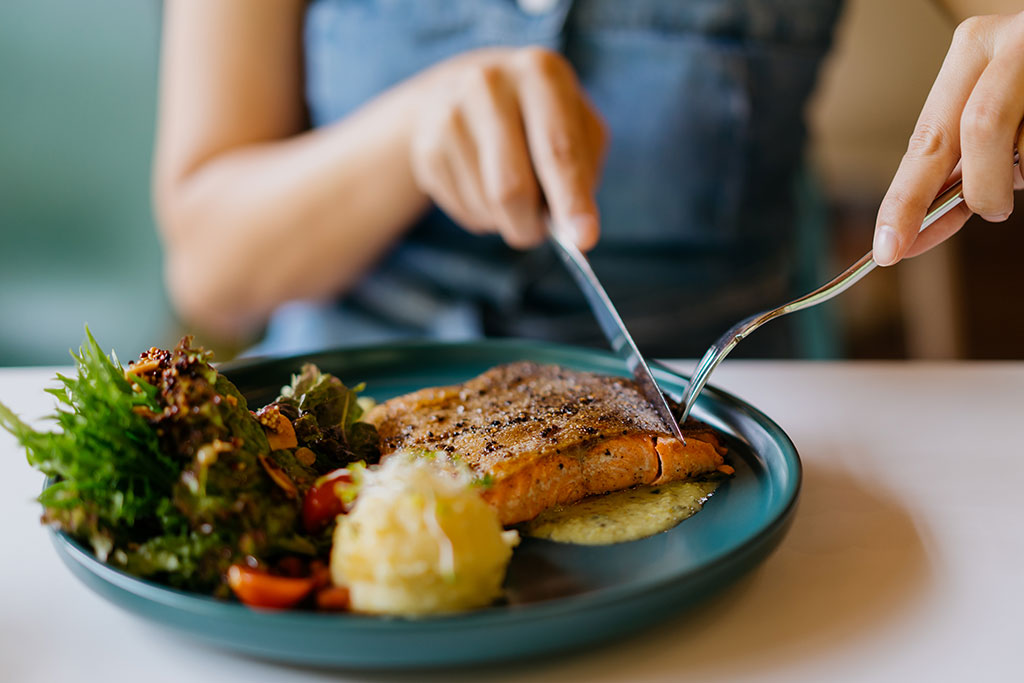
A balanced diet overall can help keep your body operating smoothly, but there are specific foods you may want to incorporate into your meals during winter to help combat your seasonal discomforts. For instance, fish, nuts, and seeds are generally rich in omega-3 fatty acids, which are thought to reduce inflammation in your body and relieve pain in your joints. In addition, consider taking advantage of seasonal produce like leeks, collard greens, beets, and sweet potatoes since they’re at their freshest in winter and also have great anti-inflammatory properties.

Many systems in your body need water to function right, and your joints and muscles are no exception. Up to 80 percent of your joint cartilage is water, so when you’re dehydrated, it can’t be properly lubricated, causing you to experience greater discomfort. Get in the habit of regularly reaching for a glass or refillable bottle of water throughout the day, and aim for a specific daily amount. As a general rule, the US National Academies of Sciences, Engineering, and Medicine recommends about 15½ cups for men and 11½ cups for women. You could also drink hot teas or incorporate more soups and broths into your diet to help you get your liquids from other sources.
By understanding the common discomforts this season can bring, you can take proactive steps to reduce them for a more enjoyable winter season. However, if you experience persistent or severe aches and pains, it’s best to seek advice from a health-care professional for personalized guidance and treatment.








